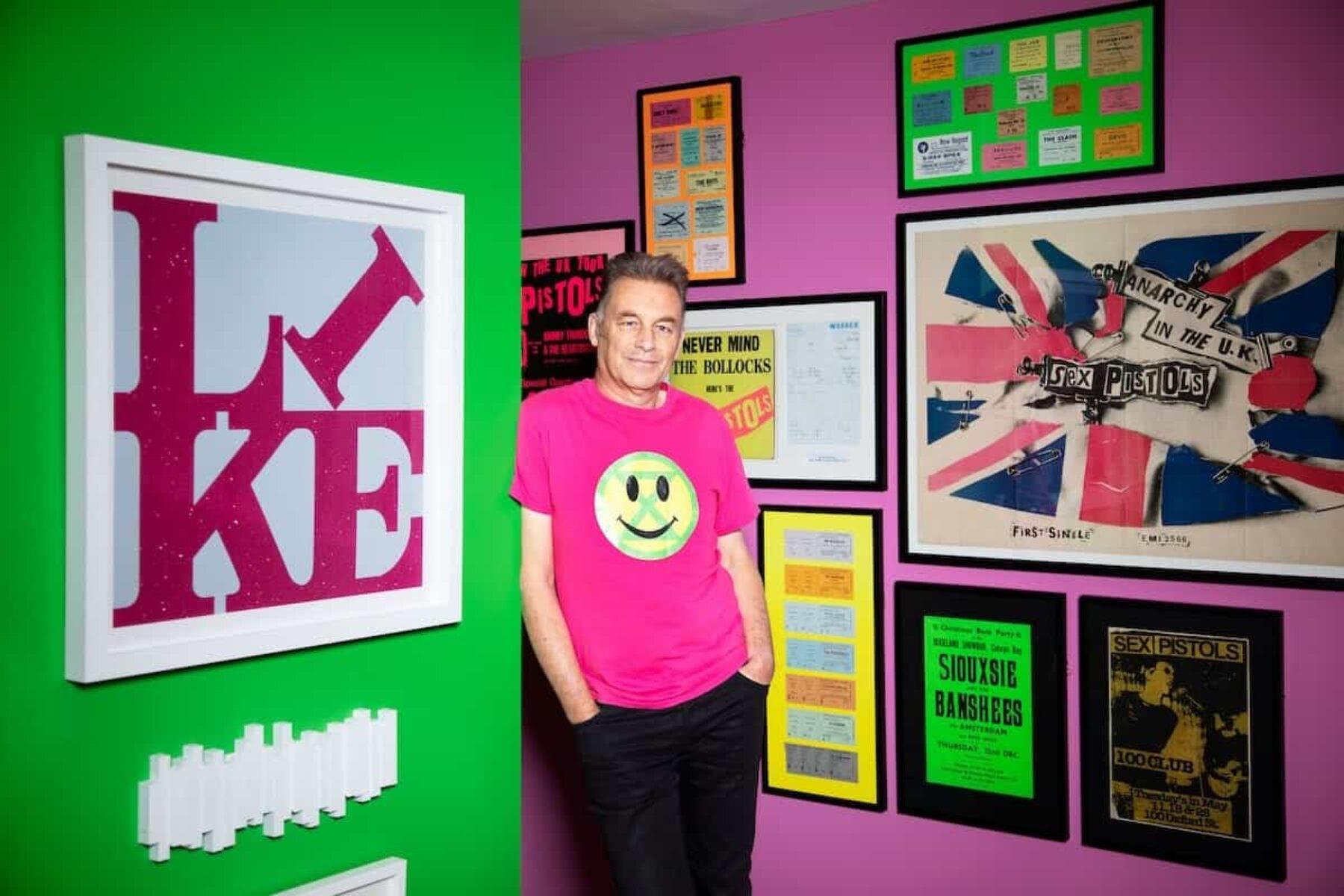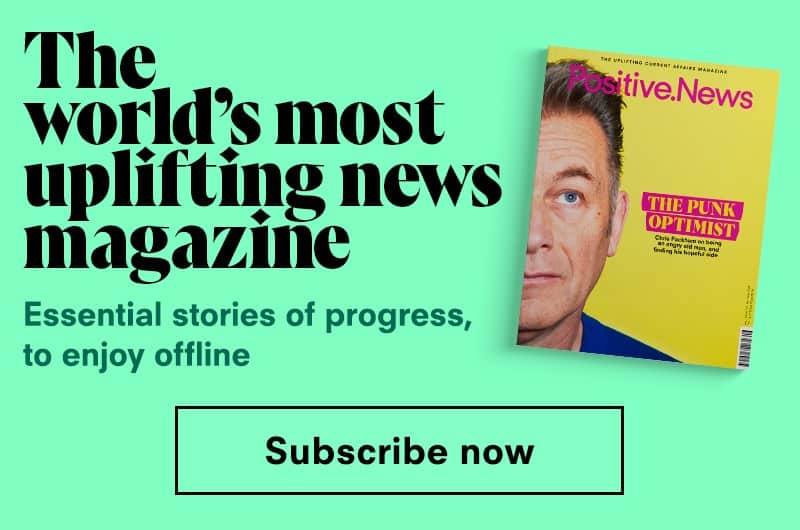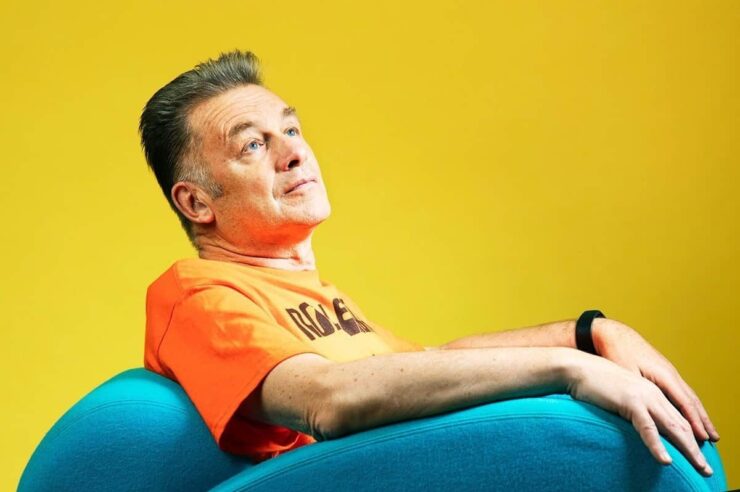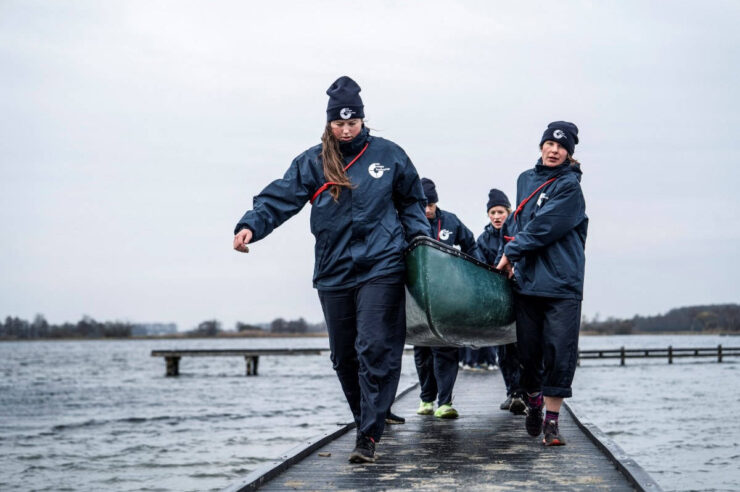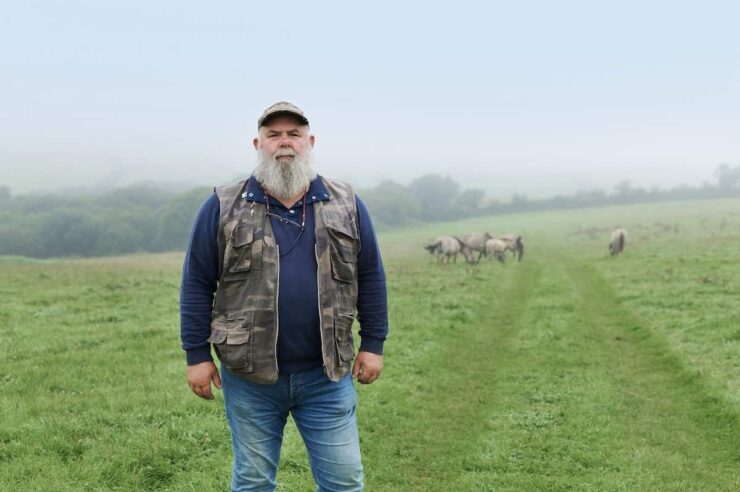He’s faced death threats over his activism, had a visit from arsonists, and witnessed a relentless decline in biodiversity. How does the TV naturalist stay positive?
Cycling up to Chris Packham’s New Forest house, I’m brought up short by a pair of seriously heavy-duty security gates. The reason for their presence is right there beside them: a charred post, which is all that remains of the old wooden gates that stood here before. Gates that were burned to a crisp when masked men blew up a car in an arson attack one night two years ago.
It followed months of death threats and intimidation, the likes of which prompted the BBC to allocate him a bodyguard while filming Winterwatch. Such hostility is widely seen as a response to the naturalist’s relentless and outspoken campaign against the illegal persecution of birds of prey, and the wider destruction of the nation’s wildlife.
So now we’re sat over a cup of tea at his kitchen table, looking out at the sparkle of early winter sunshine over his garden, and I ask Packham how he coped with such a frightening direct assault. He gets up. “I’ll show you,” he says, and heads into the lounge.
He’s pointing to what looks at first like a rather 80s-style black coffee table. Peering closer, I realise it’s a sealed block of charred wood. “After the attack,” he explains, “I looked at the gates and thought: ‘Wow, that burned wood is actually very beautiful.’” So he carefully cut them up into three table-sized chunks, had them encased in resin, gave one to a friend, is auctioning another off for charities “who oppose the views of the people who burned the gates down”, and is keeping this one as a memento. Why? “Because I knew I had to turn it into something positive.”
That doesn’t lessen the shock of the attack: he was at home at the time, heard the explosion, saw the flames. And on police advice, he had to spend thousands of pounds installing new security. But as he said in the aftermath: “You burned down the wrong gates … I cannot let your intimidation sway me from my course.”
It’s that combination of righteous outrage, refusal to be intimidated and, on screen at least, a relentless search for positive potential in our wildlife, which characterises Packham’s approach to his work – and which, along with a breezy, joshing TV style, perhaps lies behind his success. He’s been on Britain’s screens more or less non-stop since the late 80s, when, wearing the clothes and attitude of a bleached blond punk rocker, he injected a newly irreverent energy into nature programmes for kids through series like The Really Wild Show and Go Wild!

‘I cannot let intimidation sway me from my course,’ says Packham of the threats he has faced. Image: Pål Hansen
He’s now most famous for helming Springwatch and its seasonal sister programmes, which has brought him dangerously close to national treasure status. Indeed, he’s sometimes spoken of as ‘the new Attenborough’. He winces at the comparison. “For one thing, we don’t need a new one; we already have one! I saw him just a couple of weeks ago and he was looking good. And no one has done more to generate an affinity for life on Earth, all over the world, than Sir David. So, I would hate the thought that anyone had the temerity to be a pretender to [that status].”
More than that, though, he says, “that niche has gone: TV isn’t made the same way anymore and nor should it be.” Packham’s much more excited about handing the baton to the next generation – and the one beyond that. Their energy and passion for confronting the climate crisis should have free rein, he argues. “Young people don’t just need to be ‘given a voice’ – which is a rather patronising attitude: they need to be trusted to do things.”
His trust can go a long way. “I was up in London for the Walk for Wildlife [demo in 2018], and this guy came up to me – looked about 12 – and said: ‘What are you doing about social media?’ And I said: ‘Well, I’ve put a few tweets out, I suppose.’ And he said: ‘Oh, I can do much better than that.’ ‘OK’, I said: ‘What do you need ‘to do much better than that’?’
I’ve always done everything within my power to turn my anger into something positive
“And he said: ‘Well, I need your mobile phone.’ So me being me, I said: ‘OK, here’s the code, get on with it!’ And he did the most brilliant job.”
That young man, Fabian Harrison – who is now 24 – has gone on to work on projects like the Self-Isolating Bird Club – where Packham and stepdaughter Megan McCubbin broadcast to the world via their mobiles during the first Covid lockdown – and their latest YouTube venture, 8 Out Of 10 Bats.
“[Fabian]’s completely self-trained; he’s virtually live-edited the entire programme, and he’s been absolutely fantastic,” says Packham. “And it all stemmed from the fact that I’m prepared not only to listen to young people, but trust them. I gave him my mobile phone. He could have put something really bad out there. But I don’t care, you know. And the result was just joyous.”
As, it must be said, was 8 Out of 10 Bats: conceived by Packham and McCubbin after the BBC axed Autumnwatch – a decision that sparked a six-figure petition in protest. Bats was self-financed by Packham and a couple of benefactors (“I’m just paying the invoices now”).
Like a DIY, slightly punky version of Autumnwatch, it made good on his commitment to the next generation. The shows were liberally sprinkled with young presenters and contributors, including overtly political soapboxes that would never have made it past the BBC. “One young man asked if it would be all right if he included a photo of Rishi Sunak and his wife. I said: ‘It’s your three minutes, mate, you do what you like. I’m not here to control your content; I’m here to give you a platform to say what you want to say.’”
I wonder aloud if the teenage Packham would have leapt at such a chance if it had been around in the 70s. But having read Fingers in the Sparkle Jar, his almost painfully honest account of a wildlife-obsessed childhood shaped by undiagnosed Asperger’s syndrome, his answer doesn’t surprise me.
“I just wouldn’t have been able to do it. I wouldn’t have been able to integrate with the team. I’d have wanted to, and I’d have felt very resentful of the fact that I couldn’t. I was basically blaming myself the whole time.”
Anger is an energy
Asperger’s had made him something of a social outcast, struggling to relate to his peers, prickly, weird – and not understanding why. It got to the point, he says, where “I resented it to such an extent that I was [determined] to overcome it.” And just as this resentment was reaching “fever pitch”, help arrived. It took the form of a furious thrash of electric guitars as punk burst over the horizon. Like many a teenage kid adrift in the 70s, it gave voice to his frustrations.”
“It’s that whole punk thing about anger – ‘anger is an energy’, as we used to say. And I was very, very angry. I’m not embarrassed about that. I was a very angry young man and I’m a very angry old man. But I’ve always done everything within my power to turn that anger into something positive.”

Asperger’s made Packham something of an outcast. Punk gave voice to his frustrations. Image: Pål Hansen
One huge positive for the young Packham was the way punk allowed him to adopt an ‘I don’t care’ air that finally broke through the isolation of his childhood. An air that could power him through a zoology degree, then training as a wildlife camera operator, and finally into presenting. Even with a bit of punk attitude, though, wasn’t it tough for this once-awkward kid to now talk to millions? “Well, I’m basically just talking to a piece of glass. It’s a lot easier talking to a piece of machinery than a human. That’s the miracle of technology.”
The awkwardness is still there. On screen, Packham’s the epitome of the relaxed presenter, facing full-on to his audience, joking with his colleagues. But I’m sat at his kitchen table for 90 minutes and I’m mostly gazing at the side of his face; he’s looking straight ahead, only occasionally shooting me a sideways glance, and I’m bereft of those little visual cues that are part and parcel of most conversations. He’s upfront about it, admitting to unease in all sorts of social situations. And listening back to the recording, I realise he’s engaged very specifically with every one of my questions, cutting to the chase each time, brisk, articulate, his words spilling over themselves in his urgency to get his point across.
The anger’s still there too: anger at the despoilation of the natural world, at government, at the field sports and landowner lobbies, and the NGOs who, as he puts it, have become focused on piecemeal progress, like reintroducing dormice and other threatened species, rather than going after the powerful; the vested interests.
For me, winning is not giving up. That’s one of my sayings. You can put that on my tombstone
He turns that anger on himself, too. In his recent Channel 4 documentary Is It Time To Break The Law? Packham noted that, since he got his first pair of binoculars in 1970, wildlife across the globe has diminished by 69%. He points to the UK’s own State of Nature report, charting a continuing, relentless decline in biodiversity.
His conclusion: conservationists, including himself, have failed. “We’ve just been tinkering around the edges,” he says, rather than taking on the farming, forestry and fishing lobbies, for example. “I mean, my God, we have the lowest forest cover in Europe, most of it’s in Scotland, and 50% of that is non-native … It’s a mess. And it’s a mess because we didn’t address those things; we were pissing about with those dormice when we should have been doing bigger picture stuff.”
It’s an unsparing critique of many a conservationist’s lifetime work. I suspect he massively underestimates his own influence, enthusiastically bringing what can be hard-to-grasp concepts like rewilding or the benefits of beavers into the homes of people far outside the green bubble. It’s tempting to wonder how much worse things might be without Packham, and the way that, at 62, he still has that campaigner’s zeal.
Giving more, not giving up
Not that he doesn’t get deflated sometimes. “Occasionally, I’ll take a real hit. The last time was when the Faroese killed 1,400 white-sided dolphins in one afternoon [in late 2021]. I remember I was sat out there on the balcony, and it came through on my social media, and I felt so utterly and completely demoralised. You have these people just 250 miles away from Scotland, and they’re going out and wilfully slaughtering these sentient, long-lived, intelligent, social mammals, and they’re doing it for no reason whatsoever. And the disconnect is suddenly too great. There’s just no commonality between us … I felt so disempowered. I felt everything we were doing was pointless. I just wanted to scream.”
And that lasted for a few hours, and then Packham the campaigner got into gear. “I spoke to some people involved in the issue, and said: ‘Look, whatever I can do, I need to help.’” And soon he’s in parliament, having meetings, lobbying for change. “I just needed to turn it into something positive.”
Like you did with the charcoal table? “Yeah, that’s it. The table really sums it up. It’s about not being intimidated, you’ve got to keep at it, you’ve got to keep going.”
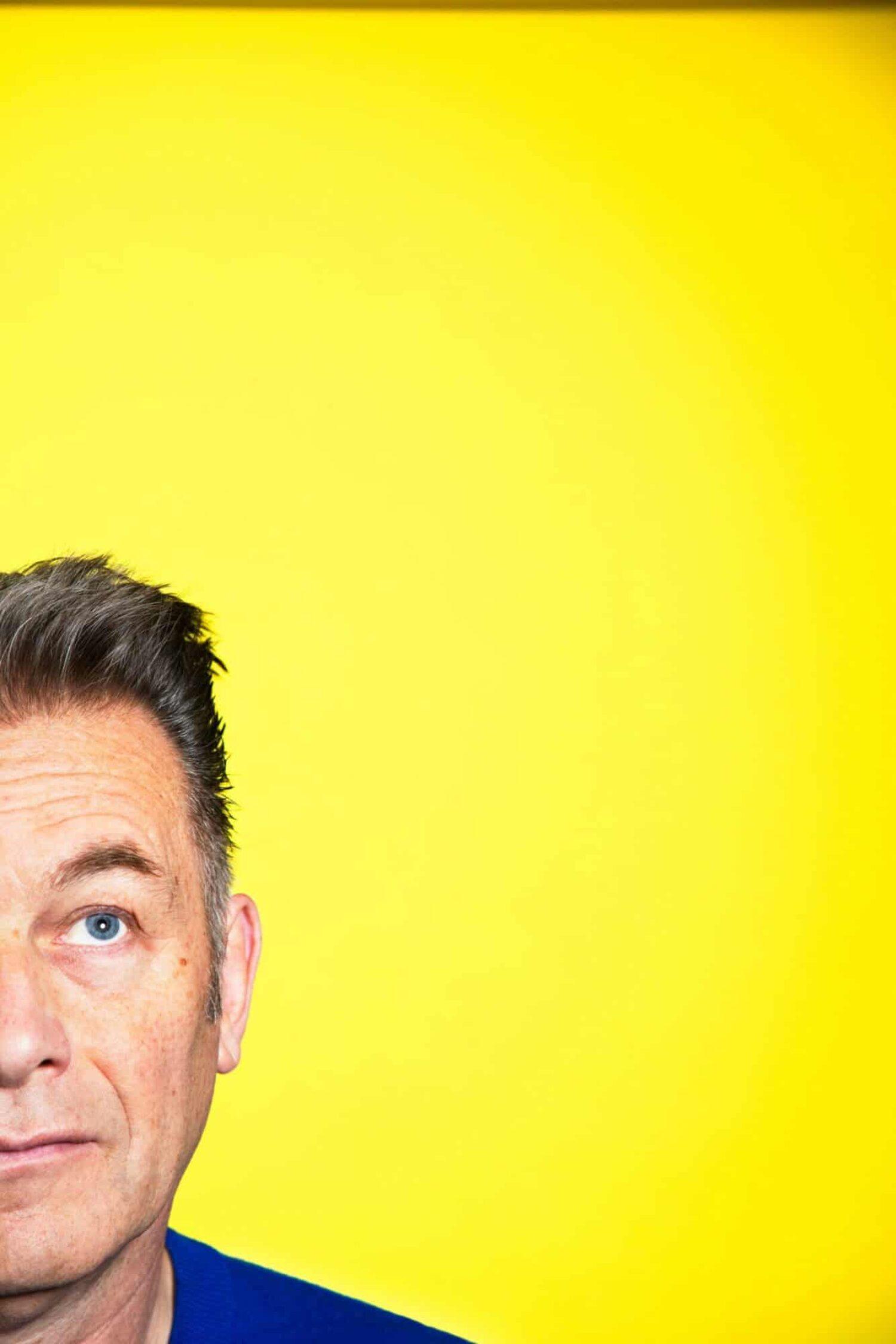
The conservationist recently considered law-breaking protest, but decided against it. Image: Pål Hansen
It does sound rather unremitting. Looking out at that crisp, tempting afternoon sunshine, I ask him if he ever feels like letting it all go, and heading out with his beloved and very lively poodles (Sid and Nancy, of course) into his beloved New Forest landscape – you know, just say: ‘Oh, sod all this, I’m going for a walk’…?
He shoots me a rare direct glance. “What, do you mean – give up?”
Well, yes.
“No, never! I mean, for me, winning is not giving up. That’s one of my sayings. You can put that on my tombstone.”
Fighting talk. But I still feel I’m foundering for a Positive News angle – the sort of positivity, indeed, which he celebrates on screen … So come on, Chris, you must see some hope out there?
Admiration and euphoria
“I see hope in young people,” he responds promptly. “Here’s a fact for you. The average age of the workers at mission control at Cape Canaveral when Neil Armstrong stepped on to the moon was 25. So why do we let [old men] run a country when 25-year-olds can put a man on the moon?” When it comes to today’s young people, he adds: “I see them waking up to the reality of their future being difficult, but also manifesting a determination to do everything they can to protect it.”
Including the likes of Just Stop Oil? Absolutely, he says. “To summon the bravery to climb on to a gantry and stop the traffic because you don’t believe that the system is doing what it should to protect your future – it’s admirable.”
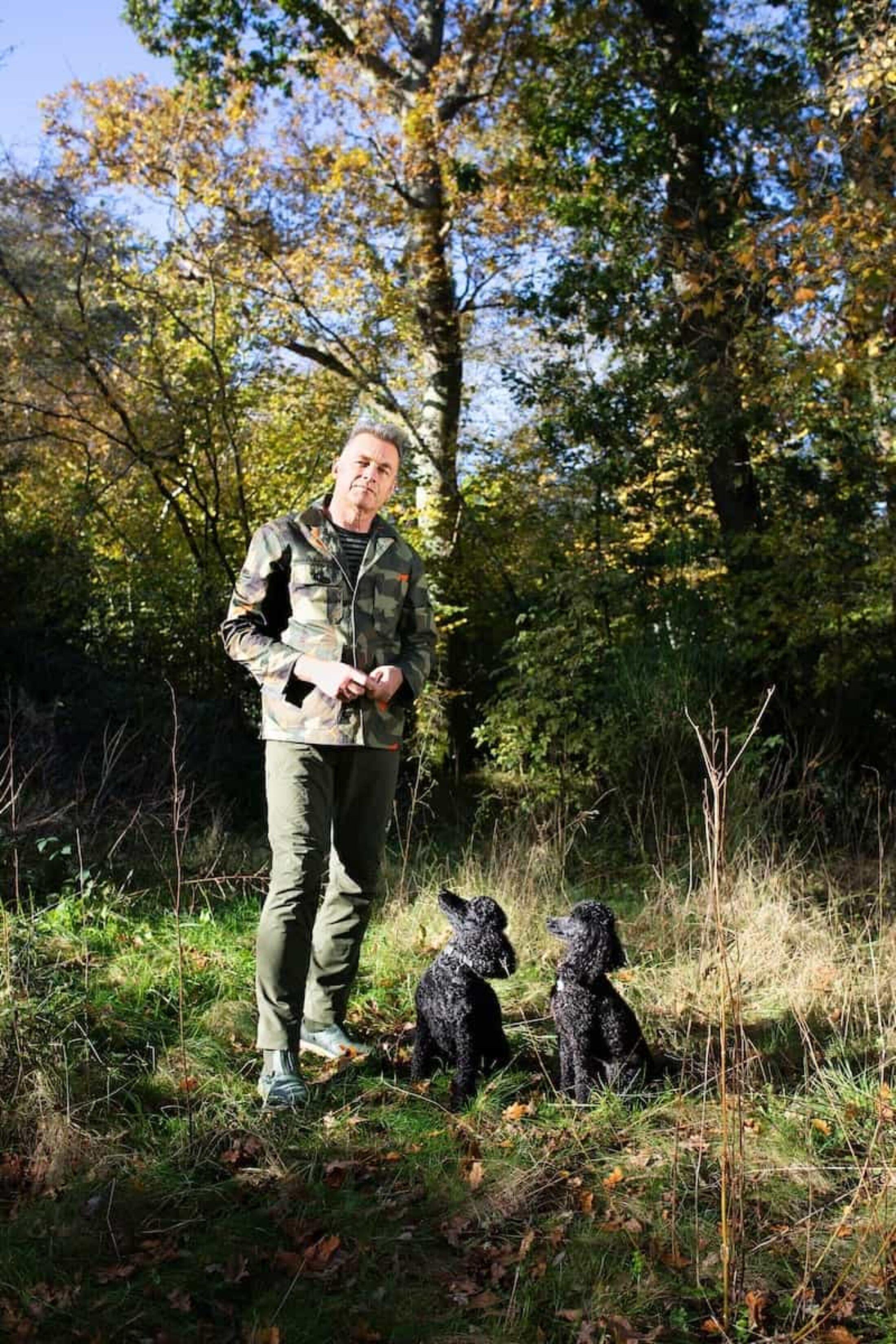
Packham with his beloved poodles, Sid and Nancy. Image: Pål Hansen
But does it change minds? Or just alienate ordinary people? He gives a nod to those criticisms, but adds that the ‘radical flank’ effect has always been a vital driver in social change, pointing to a recent study that showed how support for mainstream environmental organisations, “the Greenpeaces and Friends of the Earths”, spiked whenever there was some Just Stop Oil-style action. And he cites the argument, too, that you don’t have to persuade absolutely everyone to make change happen; that bringing 25% of the population on board has typically been enough for sweeping social progress.
He’s even considered law-breaking protest on his own part, as outlined in that documentary, which showed him being gently challenged by Extinction Rebellion founder Roger Hallam to make that leap. So, what’s stopping him?
Nature is incredibly tenacious. Just give it a chance
“What’s stopping me is that I just don’t think that’s the most effective way for me to get the message across.” In a media landscape dominated by conservative outlets who regularly brand green protestors as “eco-loons, eco-terrorists”, he says: “I’d have no control over how it was interpreted.”
Meanwhile, he’s happy to harness the power of the law to take direct action of his own, recently winning a libel case against field sports campaigners who’d accused him, bizarrely, of faking death threats. In early December, he launched a high court legal challenge against the government over its backtracking on net zero.
So, paint me a picture of what things could look like if we start getting it right … He’s in there straight away: “Look at Knepp, look at Cairngorms Connect,” he says, citing the dramatic rewilding under way in Sussex and the Scottish Highlands. “Knepp had no purple emperor butterflies. It now has the highest density anywhere in the UK. And that’s in just 20 years. Nature is incredibly tenacious. Just give it a chance. It’s like that Kevin Costner thing: ‘If you build it, they’ll come.’”
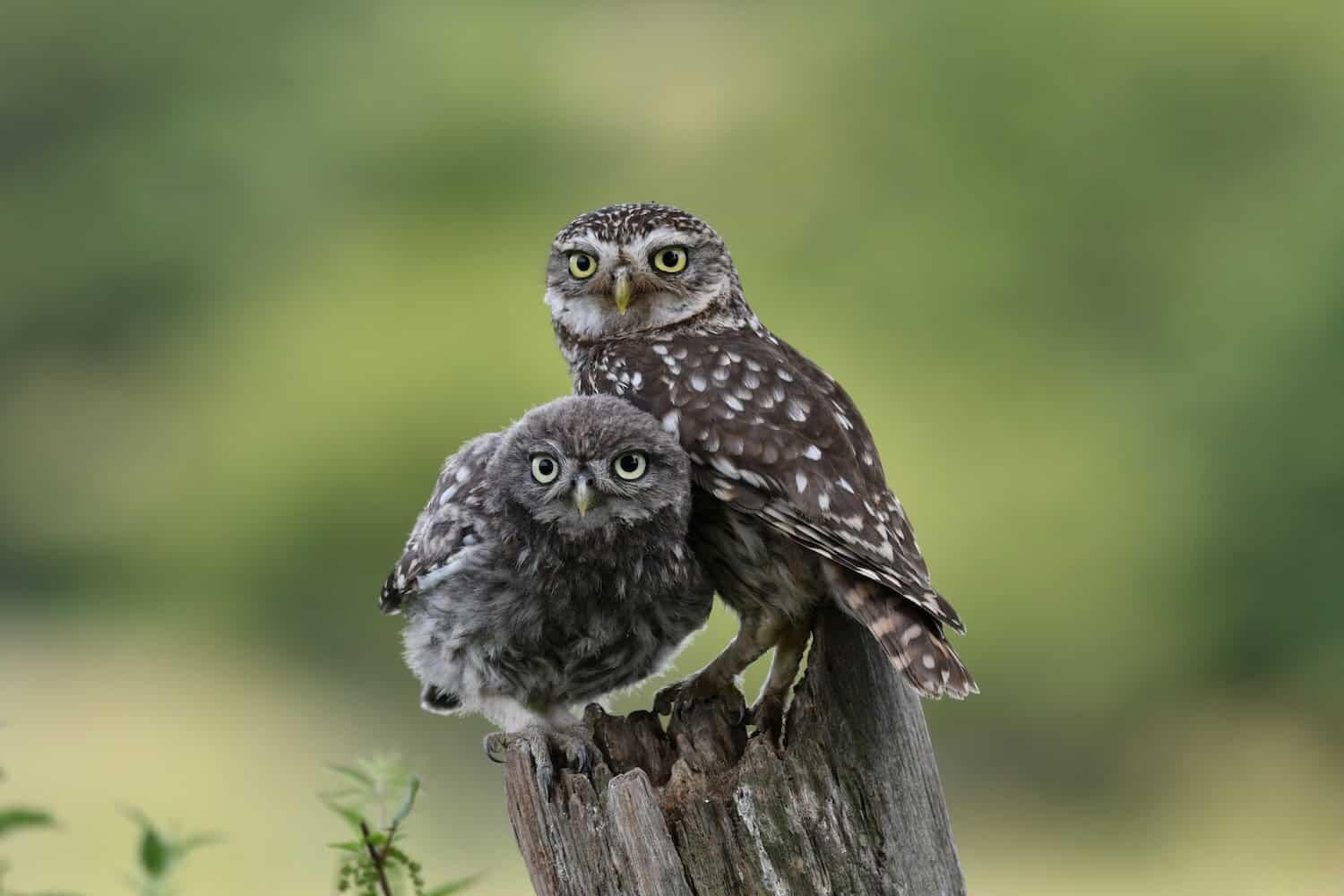
Little owls at the Knepp estate in Sussex. Image: Ned Burrell
It’s not just rewilding either, he adds. “There are farmers out there doing absolutely brilliant things. They’re producing food, with good welfare standards, landscape welfare as well as animal welfare. And they’re producing a profit. They’re making money.” He rolls out examples: Henry Edmunds’s Cholderton estate in Hampshire; Martin Lines in Cambridgeshire, stalwart of the Nature Friendly Farming Network; the Farm Wilder network of livestock producers in the West Country. All proving it’s possible to farm in a way that restores, rather than destroys, nature.
“Every year, when I get the chance, I visit Henry’s farm, and I come away euphoric. I’ve been to somewhere which is beautiful, and which is functional. I’ve met someone who’s a remarkable farmer, a remarkable naturalist, a visionary, you know, and it’s so encouraging.”
He’s encouraged by technology, too, by the surge of progress in green energy, particularly solar panels – “their efficiency has just gone through the roof” – and by the news that China’s carbon emissions could peak by 2025, way earlier than predicted, “because they’ve invested more in renewables in the last 10 years than every other country on the planet put together. They’re the punk rockers of the moment, China, aren’t they? They’re taking risks; they’re investing huge sums of money in the development of those technologies, and we all benefit from them.
“You’re asking for hope, right?” he says, warming to the theme. “Let’s just think about the human organism: it’s incredibly resourceful, adaptable, intelligent, creative, imaginative. You only need to walk into an art gallery, or stand and look at the bloody pyramids, to see that we have fantastic capacities to create. And now we need to harness those capacities to create our way out of a mess that we’ve created. And we can do it … The situation would only be hopeless if we didn’t know what was going on, if we didn’t know how to change things. But we do. So, there is always hope. We just need to let it out of the box.”
Main image: Chris Packham photographed for Positive News by Pål Hansen
Support solutions in 2024
Our small, dedicated team is passionate about building a better alternative to the negative news media. And there’s never been a greater urgency to our mission.
But to invest in producing all the solutions journalism that the world is longing for, we need funding. And because we work in your interests – not those of a wealthy media mogul or corporate owner – we’re asking readers like you to get behind our team, by making a regular contribution as a Positive News supporter.
Give once from just £1, or join 1,400+ others who contribute an average of £3 or more per month.
Join our community today, and together, we’ll change the news for good.
